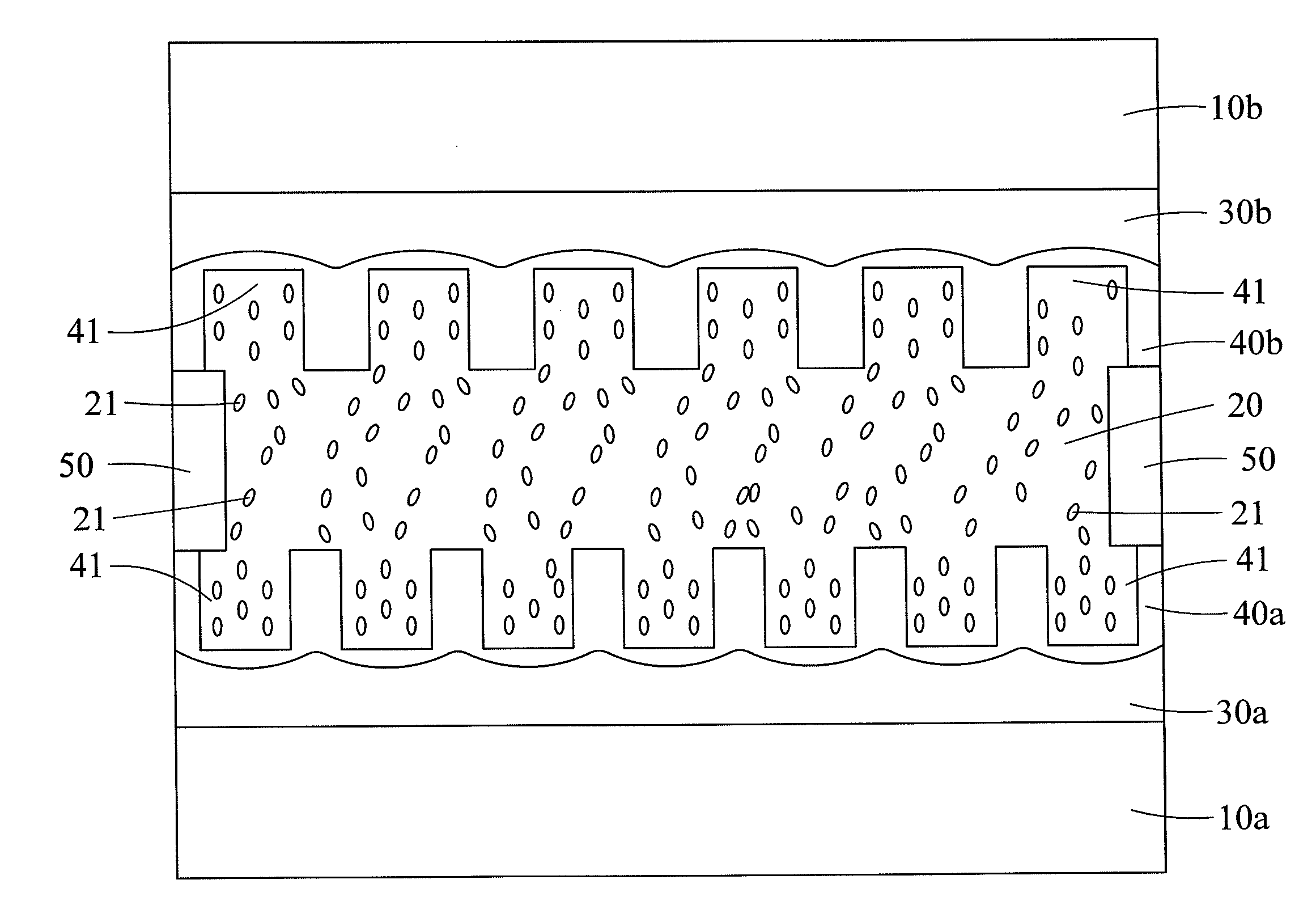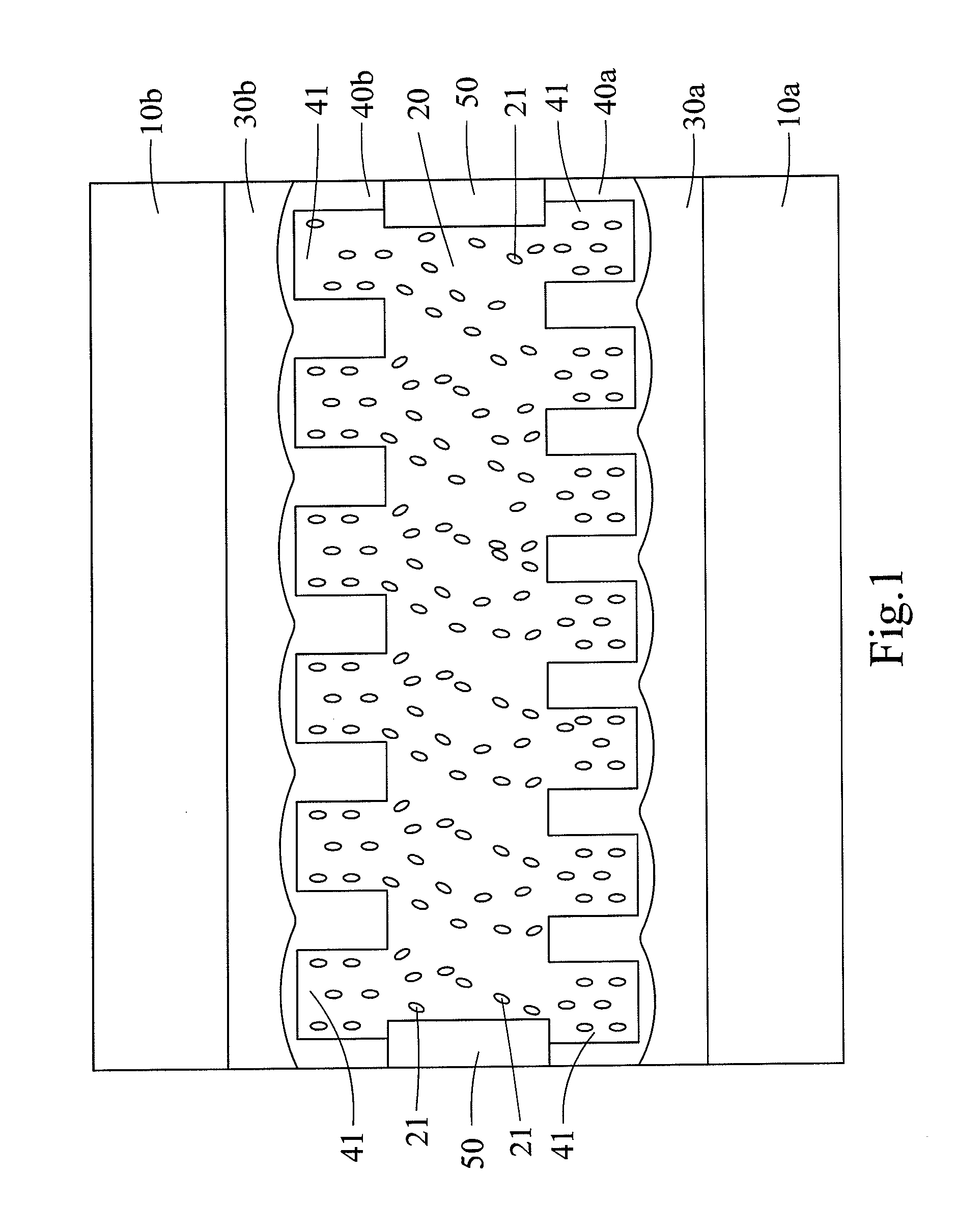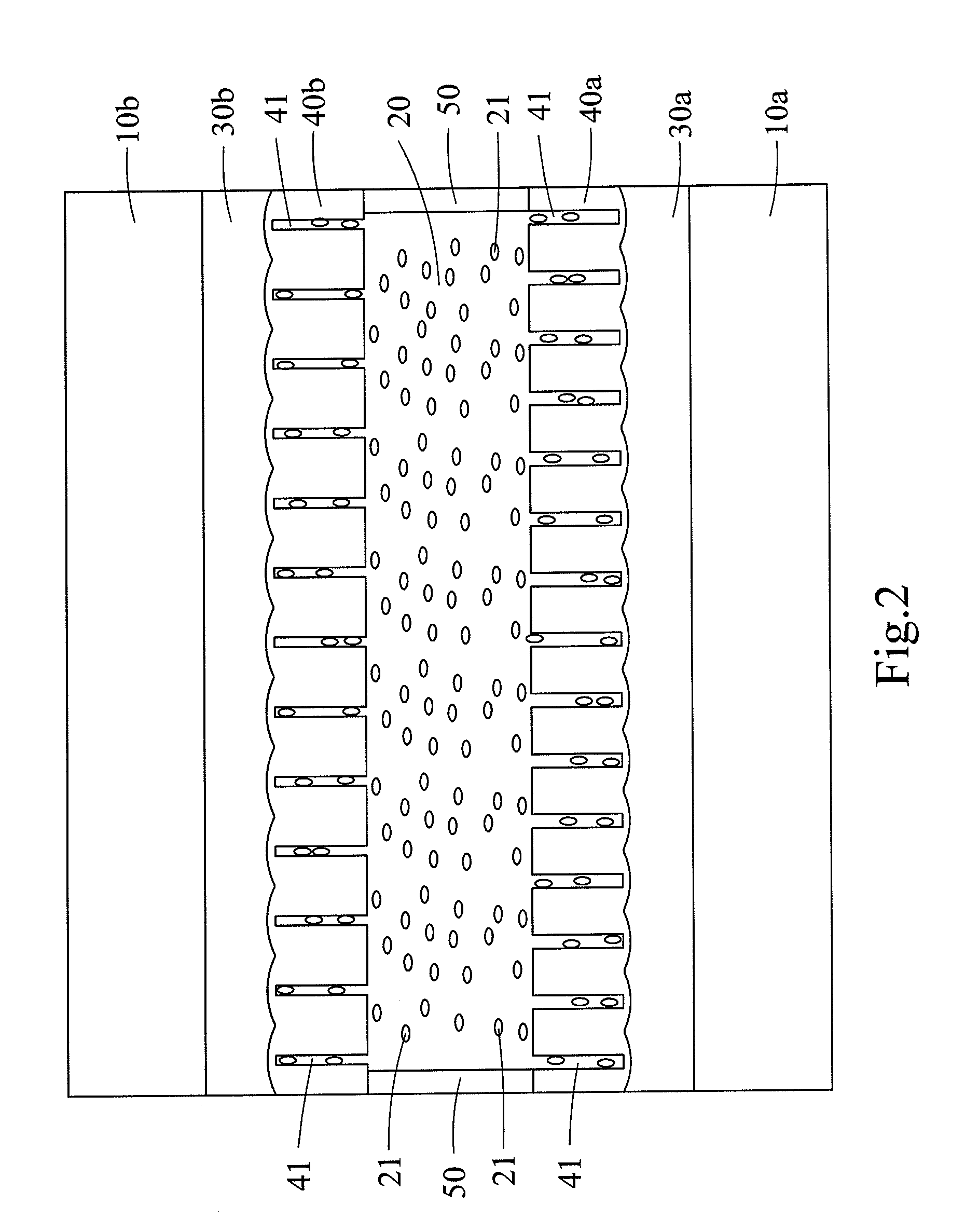Alignment film for spontaneously aligning liquid crystal
a liquid crystal and aligning film technology, applied in non-linear optics, instruments, optics, etc., can solve the problems of reducing yield, insufficient alignment stability and anchoring ability, and insufficient alignment stability, so as to prevent contamination problems, solve effective conventional problems, and reduce costs
- Summary
- Abstract
- Description
- Claims
- Application Information
AI Technical Summary
Benefits of technology
Problems solved by technology
Method used
Image
Examples
first embodiment
[0013]Refer to FIG. 1 a cross sectional view showing the structure of an alignment film for spontaneous aligning liquid crystal according to the present invention. The alignment film of the present invention is used to align a plurality of liquid crystal grains 21 and comprises a first substrate 10a, a second substrate 10b, a liquid crystal layer 20, a first transparent conductive layer 30a, a second transparent conductive layer 30b, a first alignment film 40a and a second alignment film 40b.
[0014]The second substrate 10b is arranged opposite to the first substrate 10a. The liquid crystal layer 20 is interposed between the first and second substrates 10a and 10b and consists of a plurality of liquid crystal grains 21. The first transparent conductive layer 30a is arranged between the first substrate 10a and the liquid crystal layer 20. The second transparent conductive layer 30b is arranged between the second substrate 10b and the liquid crystal layer 20. The first alignment film 4...
second embodiment
[0015]Refer to FIG. 2 a cross sectional view showing that nanometric pores induce horizontal alignment of liquid crystal grains according to the present invention. In the present invention, the nanometric pores 41 align the liquid crystal grains 21 via applying the capillary action and the gravitational action on the liquid crystal grains 21 and influencing the collective behavior of the liquid crystal grains 21. Therefore, the size of the nanometric pores 41 correlates with the result of the alignment of the liquid crystal grains 21.
[0016]More specifically when the size of the nanometric pores 41 is between 5 and 80 nm, the liquid crystal grains 21 inside the nanometric pores 41 are aligned vertically by the capillary action and the gravitational action. The liquid crystal grains 21 inside the nanometric pores 41 thus have a vertical-alignment topography and interact with the liquid crystal grains 21 outside the nanometric pores 41. Thereby, the liquid crystal grains 21 outside the...
PUM
 Login to View More
Login to View More Abstract
Description
Claims
Application Information
 Login to View More
Login to View More - R&D
- Intellectual Property
- Life Sciences
- Materials
- Tech Scout
- Unparalleled Data Quality
- Higher Quality Content
- 60% Fewer Hallucinations
Browse by: Latest US Patents, China's latest patents, Technical Efficacy Thesaurus, Application Domain, Technology Topic, Popular Technical Reports.
© 2025 PatSnap. All rights reserved.Legal|Privacy policy|Modern Slavery Act Transparency Statement|Sitemap|About US| Contact US: help@patsnap.com



